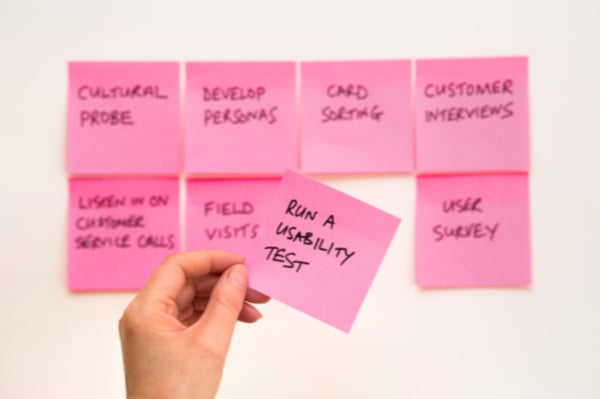Use These Workflows for All of Your Decisions
Written by ManagementDirect Friday 24 January 2020
Everyone will have a tough call to make at some point in their life – either personally or professionally – whether we want to do it or not. How can we make these decisions easier? The answer is simple: use logic.
Often, the answer is staring us in the face, even if it’s not the easiest option. Here are three of the world’s most tried-and-tested techniques that you can apply to the most challenging individual situation, so you can make an informed decision every time. (Each is available on ManagementDirect, the comprehensive learning resource of professional tools that’s freely available to all CMI members.)
Colonel John Boyd’s Ooda Loop
OODA (observe, orient, decide, act) is a circle of steps that you can follow for as long as it takes to get the desired results. It’s like a ‘suck it and see’ workflow: you observe the situation or problem, orient yourself and make a judgment, decide what to do, and follow that decision through action. Although originally created as a way to be victorious in battle, the OODA Loop is a great way of taking measured and deliberate actions under stress.
For example, if you’re starting a new role and are brimming with ideas of how to change and improve processes and collaboration, it may be a good idea to follow this workflow to make sure you don’t try to take on too much change at once. Step into the role and observe how things are done, what works and what doesn’t. Then, come to conclusions about how you could improve things, and where perhaps you were too quick to judge; bear in mind that it’s not a good idea to change too much at once as you risk affecting your relationship with your peers and causing problems in communication. Once you’ve observed and oriented, speak to your colleagues and managers about steps forward and work out ways to action them.
If you’re logged in, you can visit the details of the OODA loop on ManagementDirect here.
Edward De Bono’s Six Thinking Hats
This decision theory, perhaps the most colourful of them all, pushes people into new ways of thinking. The ‘Thinking Hats’ are colour-coded by their purpose – one, for example, is the designated Chair of the discussion, and one uses only emotional logic – which can be rotated during a meeting to make sure every inch of ground is covered from every possible viewpoint.
For example, let’s say your department is merging two teams together and will have a new team lead. You have to decide how this new team will work as one, whether the dynamic will affect the work output, and foresee any problems with the process. When planning how this will play out, gather the key players in a room and give everyone a coloured hat to wear during a meeting. (Although fun, you do not actually have to buy six different hats!) This means that the speaker will be pushed to see the problems and solutions through a different lens; someone anxious about how the teams will work together may get the white (logic and fact) hat, and see new possibilities contrary to their personal beliefs. Switching these hats around midway through will allow everyone to voice their ideas, and may just allay those fears!
If you’re signed in, you can view the Six Hats theory on ManagementDirect here.
The PMI Model
Perhaps the most translatable of the models, for the PMI model you list Pluses, Minuses, and Interesting Points for Further Consideration. Very much like writing a pros and cons list, this is a way of cutting through emotional feelings and getting to the core facts of a problem or situation, while also leaving room for uncertainties that you can explore later down the line.
For example: there have been some changes in your company and you’re now unsure of your future there. Do you leave? Do you stay? Do you start over fresh in a new sector, or stay with the same role? In situations like this, it’s easy to bow down to anxieties or insecurities. Yet, by listing every negative and positive attribute of your situation, you may see things differently than before. You may even get a eureka moment!
If you’re signed in, you can view the PMI model on ManagementDirect here.
Using CMI’s ManagementDirect, which is full to the brim with checklists, articles, and theories around decision making, you can get a granular view of the best ways to view that tough call. You can also read our article on what comes after making a touch decision: How to do the stuff that you don't want to do.
Image: Unsplash
Article
Our extensive range of articles are designed to keep you in the loop with all the latest management and leadership best practice, research and news.
Members See More
CMI Members have access to thousands of online learning and CPD resources. Learn more about our membership benefits
Join The Community
CMI offers a variety of flexible membership solutions, tailored to your needs. Find out more and get involved in the CMI community today.
